-

Apr
18
Interpretive Summary: 5-hydroxytryphophan mitigates ergot alkaloid-induced suppression of serotonin and feed intake in cattle
.png?sfvrsn=707356d1_1)
Some grass species have a symbiotic relationship with an endophytic fungus that produces toxic ergot alkaloids which have detrimental impacts on herbivores. Ergot alkaloids have a significant impact on livestock production causing annual loss to the livestock industry that likely exceeds $1 billion.
Read more
-

Apr
18
Interpretive Summary: Improving feed intake and rumen fermentation in lambs using mixed-dimensional attapulgite clay to adsorb naturally occurring mycotoxins
.png?sfvrsn=407356d1_1)
The issue of mycotoxin-contaminated animal feed has consistently presented a significant challenge in relation to animal health and production. The mixed-dimensional attapulgite clay (MDA) has been proven effective in binding polar mycotoxins such as aflatoxin, while also effectively adsorbing hydrophobic or weakly polar mycotoxins such as zearalenone (ZEN) and ochratoxin.
Read more
-

Apr
18
Interpretive Summary: Processing of corn-based dog foods through pelleting, baking and extrusion and their effect on apparent total tract digestibility and colonic health of adult dogs
.png?sfvrsn=167356d1_1)
Dog foods were produced via extrusion, baking, and pelleting to yield increasing amounts of starch resistant to digestion (resistant starch [RS]). The foods were compared to a negative dextrose control that contained dextrose in place of starch.
Read more
-

Apr
18
Interpretive Summary: Maternal protein supplementation during mid-gestation improves offspring performance and metabolism in beef cows
.png?sfvrsn=e77356d1_1)
In tropical conditions, beef cows on pasture often experience protein restriction during mid-to-late gestation, potentially impacting offspring development negatively. To address this, we investigated the effects of strategic protein supplementation for pregnant beef cows fed low-quality forage during mid-gestation on the postnatal growth trajectory of their offspring.
Read more
-

Apr
18
Interpretive Summary: Sustainable pig diets: partial grain replacement with former food products and its impact on meat quality
.png?sfvrsn=b57356d1_1)
Pigs are ideal species to convert food losses, also named former food products (FFPs), into animal proteins. The present study investigated the impact of incorporating sugary and salty FFPs into the diets of growing and finishing pigs on meat quality and its sensory characteristics.
Read more
-

Apr
18
Interpretive Summary: Effects of dietary protein level on intestinal function and inflammation in nursery pigs
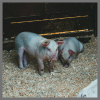
High dietary crude protein (CP) is thought to antagonize nursery pig enteric health. Feeding high CP diets to nursery pigs did not exacerbate intestinal health or inflammation, and overall, protein level in the diet has little impact on animal health and performance.
Read more
-

Apr
12
Mike Galyean's Animal Science Family Tree

Read more
-

Apr
11
Interpretive Summary: Levodopa attenuates the feed intake reduction caused by ergot alkaloids in cattle
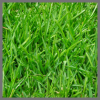
Fescue has become the dominant cool-season perennial grass in the southeastern region of the United States and is also found in other countries. Endophytes from a plant–fungus symbiotic relationship produce toxic alkaloids that have caused significant annual economic losses to the livestock industry.
Read more
-

Apr
11
Interpretive Summary: Supplemental trace minerals as complexed or inorganic sources for beef cattle during the receiving period
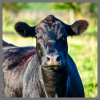
Issues associated with health and management of newly received cattle continue to pose significant animal welfare and economic challenges for the beef industry. Diagnosis of bovine respiratory disease, accompanied with poor growth performance, can be addressed by nutritional intervention in receiving cattle.
Read more
-

Apr
11
Interpretive Summary: Genetic parameters for carcass traits of progeny of beef bulls mated to dairy cows
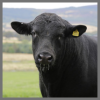
Low-cost genotyping platforms and sexed-semen have enabled the production of high breeding value dairy replacement heifers from a fraction of the herd representing the most elite cows. The remainder of the cow herd can be bred to beef bulls using male-sexed-semen.
Read more
-

Apr
11
Interpretive Summary: Lightweight model-based sheep face recognition via face image recording channel
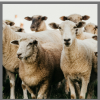
Accurate identification of individual sheep is a crucial prerequisite for establishing digital sheep farms and precision livestock farming. In this study, we developed a lightweight sheep face recognition model, YOLOv7-SFR. Utilizing a face image recording channel, we efficiently collected facial images from 50 experimental sheep, resulting in a comprehensive sheep face dataset.
Read more
-

Apr
11
Interpretive Summary: Parental betaine supplementation promotes gosling growth with epigenetic modulation of IGF gene family in the liver

The goose industry plays important roles in economics, cultures, and ecosystems, yet the low laying and growth rates of many indigenous breeds hinders the development of the goose farming. Betaine, an important methyl donor, is commonly used as a feed additive in livestock and poultry to enhance animal growth.
Read more
-

Apr
04
Interpretive Summary: The effects of including sprouted barley with alfalfa hay in the diet on ruminal health and performance of cow-calf pairs
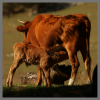
Climate variability and uncertainty associated with weather patterns can greatly impact feed security for cattle producers. Flooding, drought, and temperature extremes can reduce a farmer’s ability to produce a consistent crop, resulting in feed prices that can fluctuate greatly.
Read more
-

Apr
04
Interpretive Summary: Effect of continuous or intermittent feeding of ergot contaminated grain in a mash or pelleted form on the performance and health of feedlot beef steers
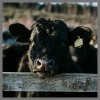
Produced by the fungus Claviceps purpurea, ergot alkaloids (EA) are toxic to beef cattle when consumed and can lead to reduction in feed intake and growth performance, vasoconstriction of the blood vessels, hyperthermia, damage to extremities (ears, tails, and hooves) and in severe cases, death.
Read more
-

Apr
04
Interpretive Summary: Efficacy of a novel multi-enzyme feed additive on growth performance, nutrient digestibility, and gut microbiome of weanling pigs fed corn–wheat or wheat–barley-based diet
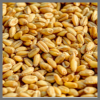
There is a pressing need to enhance livestock production efficiency to meet the growing global demand for meat. Carbohydrases and proteases are enzymes typically added to swine diets to improve nutrient utilization, leading to better growth rates and feed efficiency. This ultimately contributes to sustainable and economically viable pig farming.
Read more
-

Apr
04
Interpretive Summary: Unveiling the Genetic Landscape of Feed Efficiency in Holstein Dairy Cows: Insights into Heritability, Genetic Markers, and Pathways via Meta-Analysis
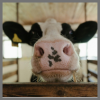
A thorough understanding of the genetic factors that influence the feed efficiency of dairy cows is a prerequisite for planning and implementing selective breeding programs. Therefore, a systematic review of reported heritability, genetic markers, and biological pathways affecting FE-related traits in Holstein dairy cows was conducted and followed by a meta-analysis.
Read more
-

Apr
04
Interpretive Summary: Effects of a novel dental chew on oral health outcomes, halitosis, and microbiota of adult dogs

In this study, we aimed to determine the effects of a novel dental chew on the breath odor, oral health outcomes, and oral microbiota of dogs. Healthy adult dogs were used in a crossover design study to test a diet only (control) or the diet plus a novel dental chew.
Read more
-

Apr
01
12th Nutrient Requirements of Swine Committee is Underway
The National Academy of Sciences, Engineering and Medicine (NASEM) has established the committee to develop the 12th Nutrient Requirements of Swine. The committee has already met in person twice and on-line three times with annual in-person and monthly on-line meetings scheduled for the future. NASEM’s charge to the committee is to “conduct an in-depth review of the scientific literature on the nutritional needs of swine and prepare a report that revises and updates the 11th edition of Nutrient Requirements of Swine.”
Read more
-

Mar
28
Interpretive Summary: Animal ag industry supports the America’s Wildlife Habitat Conservation Act

Representative Bruce Westerman introduced America’s Wildlife Habitat Conservation Act (AWHCA) into the House of Representatives to fund habitat restoration and forest management projects and promote collaboration with private partners to conserve habitat for at-risk and listed species. The AWHCA will also provide $20 million to fund habitat restoration projects and forest management on tribal lands.
Read more
-

Mar
28
Interpretive Summary: Final rule issues for the Packers and Stockers Act
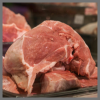
The United States Department of Agriculture (USDA) has announced the finalization of the Inclusive Competition and Market Integrity Under the Packers and Stockyards Act. The final rule will be effective for 60 days following publishing in the Federal Register and is designed to establish clearer, more effective standards under the Packers and Stockyards (P&S) Act for prohibited practices relating to discrimination, retaliation, and deception in contracting.
Read more
 AprInterpretive Summary: 5-hydroxytryphophan mitigates ergot alkaloid-induced suppression of serotonin and feed intake in cattle
AprInterpretive Summary: 5-hydroxytryphophan mitigates ergot alkaloid-induced suppression of serotonin and feed intake in cattle.png?sfvrsn=707356d1_1) Some grass species have a symbiotic relationship with an endophytic fungus that produces toxic ergot alkaloids which have detrimental impacts on herbivores. Ergot alkaloids have a significant impact on livestock production causing annual loss to the livestock industry that likely exceeds $1 billion.
Some grass species have a symbiotic relationship with an endophytic fungus that produces toxic ergot alkaloids which have detrimental impacts on herbivores. Ergot alkaloids have a significant impact on livestock production causing annual loss to the livestock industry that likely exceeds $1 billion. AprInterpretive Summary: Improving feed intake and rumen fermentation in lambs using mixed-dimensional attapulgite clay to adsorb naturally occurring mycotoxins
AprInterpretive Summary: Improving feed intake and rumen fermentation in lambs using mixed-dimensional attapulgite clay to adsorb naturally occurring mycotoxins.png?sfvrsn=407356d1_1) The issue of mycotoxin-contaminated animal feed has consistently presented a significant challenge in relation to animal health and production. The mixed-dimensional attapulgite clay (MDA) has been proven effective in binding polar mycotoxins such as aflatoxin, while also effectively adsorbing hydrophobic or weakly polar mycotoxins such as zearalenone (ZEN) and ochratoxin.
The issue of mycotoxin-contaminated animal feed has consistently presented a significant challenge in relation to animal health and production. The mixed-dimensional attapulgite clay (MDA) has been proven effective in binding polar mycotoxins such as aflatoxin, while also effectively adsorbing hydrophobic or weakly polar mycotoxins such as zearalenone (ZEN) and ochratoxin. AprInterpretive Summary: Processing of corn-based dog foods through pelleting, baking and extrusion and their effect on apparent total tract digestibility and colonic health of adult dogs
AprInterpretive Summary: Processing of corn-based dog foods through pelleting, baking and extrusion and their effect on apparent total tract digestibility and colonic health of adult dogs.png?sfvrsn=167356d1_1) Dog foods were produced via extrusion, baking, and pelleting to yield increasing amounts of starch resistant to digestion (resistant starch [RS]). The foods were compared to a negative dextrose control that contained dextrose in place of starch.
Dog foods were produced via extrusion, baking, and pelleting to yield increasing amounts of starch resistant to digestion (resistant starch [RS]). The foods were compared to a negative dextrose control that contained dextrose in place of starch. AprInterpretive Summary: Maternal protein supplementation during mid-gestation improves offspring performance and metabolism in beef cows
AprInterpretive Summary: Maternal protein supplementation during mid-gestation improves offspring performance and metabolism in beef cows.png?sfvrsn=e77356d1_1) In tropical conditions, beef cows on pasture often experience protein restriction during mid-to-late gestation, potentially impacting offspring development negatively. To address this, we investigated the effects of strategic protein supplementation for pregnant beef cows fed low-quality forage during mid-gestation on the postnatal growth trajectory of their offspring.
In tropical conditions, beef cows on pasture often experience protein restriction during mid-to-late gestation, potentially impacting offspring development negatively. To address this, we investigated the effects of strategic protein supplementation for pregnant beef cows fed low-quality forage during mid-gestation on the postnatal growth trajectory of their offspring. AprInterpretive Summary: Sustainable pig diets: partial grain replacement with former food products and its impact on meat quality
AprInterpretive Summary: Sustainable pig diets: partial grain replacement with former food products and its impact on meat quality.png?sfvrsn=b57356d1_1) Pigs are ideal species to convert food losses, also named former food products (FFPs), into animal proteins. The present study investigated the impact of incorporating sugary and salty FFPs into the diets of growing and finishing pigs on meat quality and its sensory characteristics.
Pigs are ideal species to convert food losses, also named former food products (FFPs), into animal proteins. The present study investigated the impact of incorporating sugary and salty FFPs into the diets of growing and finishing pigs on meat quality and its sensory characteristics. AprInterpretive Summary: Effects of dietary protein level on intestinal function and inflammation in nursery pigs
AprInterpretive Summary: Effects of dietary protein level on intestinal function and inflammation in nursery pigs High dietary crude protein (CP) is thought to antagonize nursery pig enteric health. Feeding high CP diets to nursery pigs did not exacerbate intestinal health or inflammation, and overall, protein level in the diet has little impact on animal health and performance.
High dietary crude protein (CP) is thought to antagonize nursery pig enteric health. Feeding high CP diets to nursery pigs did not exacerbate intestinal health or inflammation, and overall, protein level in the diet has little impact on animal health and performance. AprMike Galyean's Animal Science Family Tree
AprMike Galyean's Animal Science Family Tree
 AprInterpretive Summary: Levodopa attenuates the feed intake reduction caused by ergot alkaloids in cattle
AprInterpretive Summary: Levodopa attenuates the feed intake reduction caused by ergot alkaloids in cattle Fescue has become the dominant cool-season perennial grass in the southeastern region of the United States and is also found in other countries. Endophytes from a plant–fungus symbiotic relationship produce toxic alkaloids that have caused significant annual economic losses to the livestock industry.
Fescue has become the dominant cool-season perennial grass in the southeastern region of the United States and is also found in other countries. Endophytes from a plant–fungus symbiotic relationship produce toxic alkaloids that have caused significant annual economic losses to the livestock industry. AprInterpretive Summary: Supplemental trace minerals as complexed or inorganic sources for beef cattle during the receiving period
AprInterpretive Summary: Supplemental trace minerals as complexed or inorganic sources for beef cattle during the receiving period Issues associated with health and management of newly received cattle continue to pose significant animal welfare and economic challenges for the beef industry. Diagnosis of bovine respiratory disease, accompanied with poor growth performance, can be addressed by nutritional intervention in receiving cattle.
Issues associated with health and management of newly received cattle continue to pose significant animal welfare and economic challenges for the beef industry. Diagnosis of bovine respiratory disease, accompanied with poor growth performance, can be addressed by nutritional intervention in receiving cattle. AprInterpretive Summary: Genetic parameters for carcass traits of progeny of beef bulls mated to dairy cows
AprInterpretive Summary: Genetic parameters for carcass traits of progeny of beef bulls mated to dairy cows Low-cost genotyping platforms and sexed-semen have enabled the production of high breeding value dairy replacement heifers from a fraction of the herd representing the most elite cows. The remainder of the cow herd can be bred to beef bulls using male-sexed-semen.
Low-cost genotyping platforms and sexed-semen have enabled the production of high breeding value dairy replacement heifers from a fraction of the herd representing the most elite cows. The remainder of the cow herd can be bred to beef bulls using male-sexed-semen. AprInterpretive Summary: Lightweight model-based sheep face recognition via face image recording channel
AprInterpretive Summary: Lightweight model-based sheep face recognition via face image recording channel Accurate identification of individual sheep is a crucial prerequisite for establishing digital sheep farms and precision livestock farming. In this study, we developed a lightweight sheep face recognition model, YOLOv7-SFR. Utilizing a face image recording channel, we efficiently collected facial images from 50 experimental sheep, resulting in a comprehensive sheep face dataset.
Accurate identification of individual sheep is a crucial prerequisite for establishing digital sheep farms and precision livestock farming. In this study, we developed a lightweight sheep face recognition model, YOLOv7-SFR. Utilizing a face image recording channel, we efficiently collected facial images from 50 experimental sheep, resulting in a comprehensive sheep face dataset. AprInterpretive Summary: Parental betaine supplementation promotes gosling growth with epigenetic modulation of IGF gene family in the liver
AprInterpretive Summary: Parental betaine supplementation promotes gosling growth with epigenetic modulation of IGF gene family in the liver The goose industry plays important roles in economics, cultures, and ecosystems, yet the low laying and growth rates of many indigenous breeds hinders the development of the goose farming. Betaine, an important methyl donor, is commonly used as a feed additive in livestock and poultry to enhance animal growth.
The goose industry plays important roles in economics, cultures, and ecosystems, yet the low laying and growth rates of many indigenous breeds hinders the development of the goose farming. Betaine, an important methyl donor, is commonly used as a feed additive in livestock and poultry to enhance animal growth. AprInterpretive Summary: The effects of including sprouted barley with alfalfa hay in the diet on ruminal health and performance of cow-calf pairs
AprInterpretive Summary: The effects of including sprouted barley with alfalfa hay in the diet on ruminal health and performance of cow-calf pairs Climate variability and uncertainty associated with weather patterns can greatly impact feed security for cattle producers. Flooding, drought, and temperature extremes can reduce a farmer’s ability to produce a consistent crop, resulting in feed prices that can fluctuate greatly.
Climate variability and uncertainty associated with weather patterns can greatly impact feed security for cattle producers. Flooding, drought, and temperature extremes can reduce a farmer’s ability to produce a consistent crop, resulting in feed prices that can fluctuate greatly. AprInterpretive Summary: Effect of continuous or intermittent feeding of ergot contaminated grain in a mash or pelleted form on the performance and health of feedlot beef steers
AprInterpretive Summary: Effect of continuous or intermittent feeding of ergot contaminated grain in a mash or pelleted form on the performance and health of feedlot beef steers Produced by the fungus Claviceps purpurea, ergot alkaloids (EA) are toxic to beef cattle when consumed and can lead to reduction in feed intake and growth performance, vasoconstriction of the blood vessels, hyperthermia, damage to extremities (ears, tails, and hooves) and in severe cases, death.
Produced by the fungus Claviceps purpurea, ergot alkaloids (EA) are toxic to beef cattle when consumed and can lead to reduction in feed intake and growth performance, vasoconstriction of the blood vessels, hyperthermia, damage to extremities (ears, tails, and hooves) and in severe cases, death. AprInterpretive Summary: Efficacy of a novel multi-enzyme feed additive on growth performance, nutrient digestibility, and gut microbiome of weanling pigs fed corn–wheat or wheat–barley-based diet
AprInterpretive Summary: Efficacy of a novel multi-enzyme feed additive on growth performance, nutrient digestibility, and gut microbiome of weanling pigs fed corn–wheat or wheat–barley-based diet There is a pressing need to enhance livestock production efficiency to meet the growing global demand for meat. Carbohydrases and proteases are enzymes typically added to swine diets to improve nutrient utilization, leading to better growth rates and feed efficiency. This ultimately contributes to sustainable and economically viable pig farming.
There is a pressing need to enhance livestock production efficiency to meet the growing global demand for meat. Carbohydrases and proteases are enzymes typically added to swine diets to improve nutrient utilization, leading to better growth rates and feed efficiency. This ultimately contributes to sustainable and economically viable pig farming. AprInterpretive Summary: Unveiling the Genetic Landscape of Feed Efficiency in Holstein Dairy Cows: Insights into Heritability, Genetic Markers, and Pathways via Meta-Analysis
AprInterpretive Summary: Unveiling the Genetic Landscape of Feed Efficiency in Holstein Dairy Cows: Insights into Heritability, Genetic Markers, and Pathways via Meta-Analysis A thorough understanding of the genetic factors that influence the feed efficiency of dairy cows is a prerequisite for planning and implementing selective breeding programs. Therefore, a systematic review of reported heritability, genetic markers, and biological pathways affecting FE-related traits in Holstein dairy cows was conducted and followed by a meta-analysis.
A thorough understanding of the genetic factors that influence the feed efficiency of dairy cows is a prerequisite for planning and implementing selective breeding programs. Therefore, a systematic review of reported heritability, genetic markers, and biological pathways affecting FE-related traits in Holstein dairy cows was conducted and followed by a meta-analysis. AprInterpretive Summary: Effects of a novel dental chew on oral health outcomes, halitosis, and microbiota of adult dogs
AprInterpretive Summary: Effects of a novel dental chew on oral health outcomes, halitosis, and microbiota of adult dogs In this study, we aimed to determine the effects of a novel dental chew on the breath odor, oral health outcomes, and oral microbiota of dogs. Healthy adult dogs were used in a crossover design study to test a diet only (control) or the diet plus a novel dental chew.
In this study, we aimed to determine the effects of a novel dental chew on the breath odor, oral health outcomes, and oral microbiota of dogs. Healthy adult dogs were used in a crossover design study to test a diet only (control) or the diet plus a novel dental chew. Apr12th Nutrient Requirements of Swine Committee is Underway
Apr12th Nutrient Requirements of Swine Committee is Underway MarInterpretive Summary: Animal ag industry supports the America’s Wildlife Habitat Conservation Act
MarInterpretive Summary: Animal ag industry supports the America’s Wildlife Habitat Conservation Act Representative Bruce Westerman introduced America’s Wildlife Habitat Conservation Act (AWHCA) into the House of Representatives to fund habitat restoration and forest management projects and promote collaboration with private partners to conserve habitat for at-risk and listed species. The AWHCA will also provide $20 million to fund habitat restoration projects and forest management on tribal lands.
Representative Bruce Westerman introduced America’s Wildlife Habitat Conservation Act (AWHCA) into the House of Representatives to fund habitat restoration and forest management projects and promote collaboration with private partners to conserve habitat for at-risk and listed species. The AWHCA will also provide $20 million to fund habitat restoration projects and forest management on tribal lands. MarInterpretive Summary: Final rule issues for the Packers and Stockers Act
MarInterpretive Summary: Final rule issues for the Packers and Stockers Act The United States Department of Agriculture (USDA) has announced the finalization of the Inclusive Competition and Market Integrity Under the Packers and Stockyards Act. The final rule will be effective for 60 days following publishing in the Federal Register and is designed to establish clearer, more effective standards under the Packers and Stockyards (P&S) Act for prohibited practices relating to discrimination, retaliation, and deception in contracting.
The United States Department of Agriculture (USDA) has announced the finalization of the Inclusive Competition and Market Integrity Under the Packers and Stockyards Act. The final rule will be effective for 60 days following publishing in the Federal Register and is designed to establish clearer, more effective standards under the Packers and Stockyards (P&S) Act for prohibited practices relating to discrimination, retaliation, and deception in contracting.



